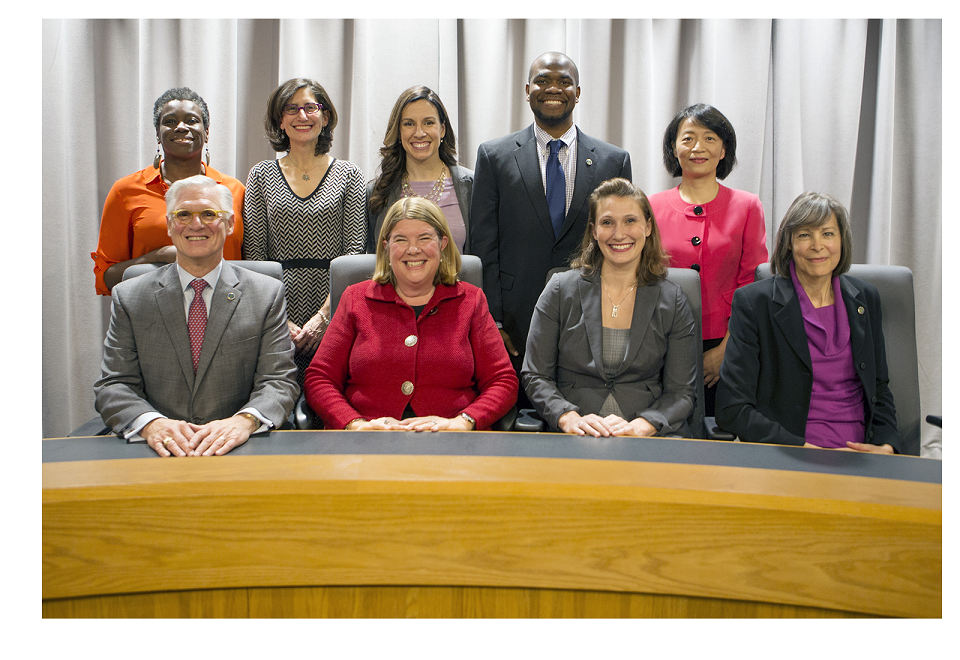Some Chapel Hill and Carrboro residents are still recovering after the water crisis on February 3 and 4 that left all without running water during the affected time.
An accidental overfeed of fluoride in the water at the Orange Water and Sewer Authority Plant caused the initial issue on February 2. OWASA began receiving water from the City of Durham at that time to continue supplying customers with high-quality drinking water.
OWASA had also asked customers to try and conserve as much water as possible. The next morning, a major water main break occurred in northeast Chapel Hill.
OWASA is working to keep all informed while the organization works on recovery for the community.
“The county was always guided by what was best for our public health and safety community,” said Ed Kerwin, OWASA executive director. “And we can say with confidence that the drinking water remained safe throughout the event and at no time did elevated levels of fluoride reach the public drinking water system.”
Kerwin presented information on the water emergency to the Chapel Hill Town Council Monday evening. He said a major cause of the issue with the pipe break was that it wasn’t originally installed in regulation with the same standards held today,
“A pipe like that is expected to last at least 40 years,” he said. “Perhaps as long as 80 or 100 years, and it lasted what? 44 years.”
Chapel Hill Fire Chief Matt Sullivan also attended the meeting to discuss emergency personnel responses to community reactions to the water emergency. Sullivan said all personnel worked to create a measured response, as to not incite an already-tense community.
“Had we run out of water, and we were definitely worried that we were getting to the point Friday afternoon that we might run out of water, we might just be digging out right now,” he said. “So, I think OWASA’s staff did an incredible job getting us back online and preventing some of the long-standing effects that we could have had.”
Chapel Hill Police Chief Chris Blue also spoke at the meeting and said one of the most difficult jobs was communicating to all residents that the water wasn’t usable. Especially, because he said many community members wanted answers to specific questions about what to do.
“How to take your rain barrel and how to use that to put in the back of your toilet to flush it, can you put kitty litter in your toilet? And is it safe to do that?” he said. “That’s a real question we got, by the way. And the answer is no, by the way, in case you were wondering.”
Kerwin said decisions are still being made by officials about the future of the water supply, particularly whether or not fluoride will continue to be used.
“The OWASA board hasn’t decided if and when it would take up the question of fluoride or no fluoride,” he said. “So the OWASA board has not yet decided whether it would take that up. But what we know for sure we’re doing, is looking at our existing fluoride feed system to determine what improvements may be needed before we return that to service.”
Chapel Hill Mayor Pam Hemminger said whatever the final decision is, it’s important to remember that the emergency could have been worse.
“This could have gone on much longer,” she said. “And I think you were prepared if it did, I’m glad it didn’t go on much longer—we’re all glad it didn’t. And I know we’re still learning lessons and I agree. Thank you for the communications in different languages, in different media formats, our community partners that helped communicate, we’re learning more about that.”
OWASA has called a special work session Friday at 7:00 P.M. to discuss the independent investigation into the cause of the water crisis.
Related Stories
‹
![]()
Chapel Hill: Extending Water and Sewer...And Celebrating Public Art!Chapel Hill Mayor Pam Hemminger joins 97.9 The Hill's Brighton McConnell for an interview on Thursday, September 21.

Proposed West End Parking Deck Gets Approval From Chapel Hill Town CouncilAs the Town of Chapel Hill works to provide more parking while reducing its surface lots downtown, plans for a parking deck on the West End of Franklin Street are being developed. Town staff presented an updated proposal for a five-level parking deck to the Chapel Hill Town Council on November 20. The deck, located […]

Chapel Hill Town Council Candidate ForumChapel Hill Town Council and Mayoral candidates gathered for a forum hosted on 97.9 The Hill. Town Council candidates include Jessica Anderson, Sue Hunter, Tai Huynh, Nancy Oates, Michael Parker, Amy Ryan and Renuka Soll. Mayoral candidates are Pam Hemminger and Joshua Levenson. Here is a list of questions that candidates were asked along with […]

Transit, Stormwater Among Concerns for Redevelopment of University Place in Chapel HillOwnership of the University Place mall continued to receive their first round of feedback on concept plans of a reimagining of the property. The Chapel Hill Town Council shared their impressions of the initial designs last week. The council’s review of the concept plans came just eight days after Ram Realty, the ownership group of […]

Chapel Hill Town Council Discusses Hiring Process for New Town ManagerChapel Hill’s Town Council discussed the expectations and competencies officials will be looking for when selecting a new town manager at Wednesday night’s meeting. Current town manager Roger Stancil announced in November that he will retire in the fall of this year after 12 years of service. President and founder of Developmental Associates Stephen Straus […]
![]()
Orange County Asks for Feedback from February Water Crisis ResponseOrange County residents now have a chance to give feedback to the agencies that responded to the water crisis in the southern portion of the county earlier this year. The approximately 80,000 customers served by Orange Water and Sewer Authority were without water for more than 24 hours in February. The crisis began with an […]
![]()
Consultants Hired to Conduct Review of Orange County Water CrisisA third-party consultant has been hired by county executives to study the water crisis that brought life in Chapel Hill and Carrboro to an inconvenient crawl over four months ago. Crisis Focus LLC will work with an established committee of local officials to review the plans that were executed in the wake of the crisis […]
![]()
Chapel Hill Town Council to Consider Changing Meeting DayThe Chapel Hill Town Council currently holds meetings on Mondays and work sessions on Wednesdays. According to an email from Council member Ed Harrison, that’s the way it’s been for over thirty years. Former Councilman Gerry Cohen tweeted after seeing this story that he could validate the meetings had been held on Mondays for at […]
![]()
Chapel Hill Officials Designate Land for Industrial UseAn opportunity area for light industry and advanced manufacturing has been established in Chapel Hill by town officials as part of a year-long development pilot program. The Chapel Hill Town Council voted last week to designate a 60-acre parcel of land for this program near the intersection of Eubanks and Millhouse roads. Mayor Pam Hemminger […]
![]()
American Legion Property Task Force Recruitment Continues in Chapel HillThe transfer of property once owned by the American Legion to the municipal government in Chapel Hill is underway, but participation in the business at hand will not be limited to town officials. According to Mayor Pam Hemminger, residents are being sought to join a task force that will make recommendations to the Chapel Hill […]
›





